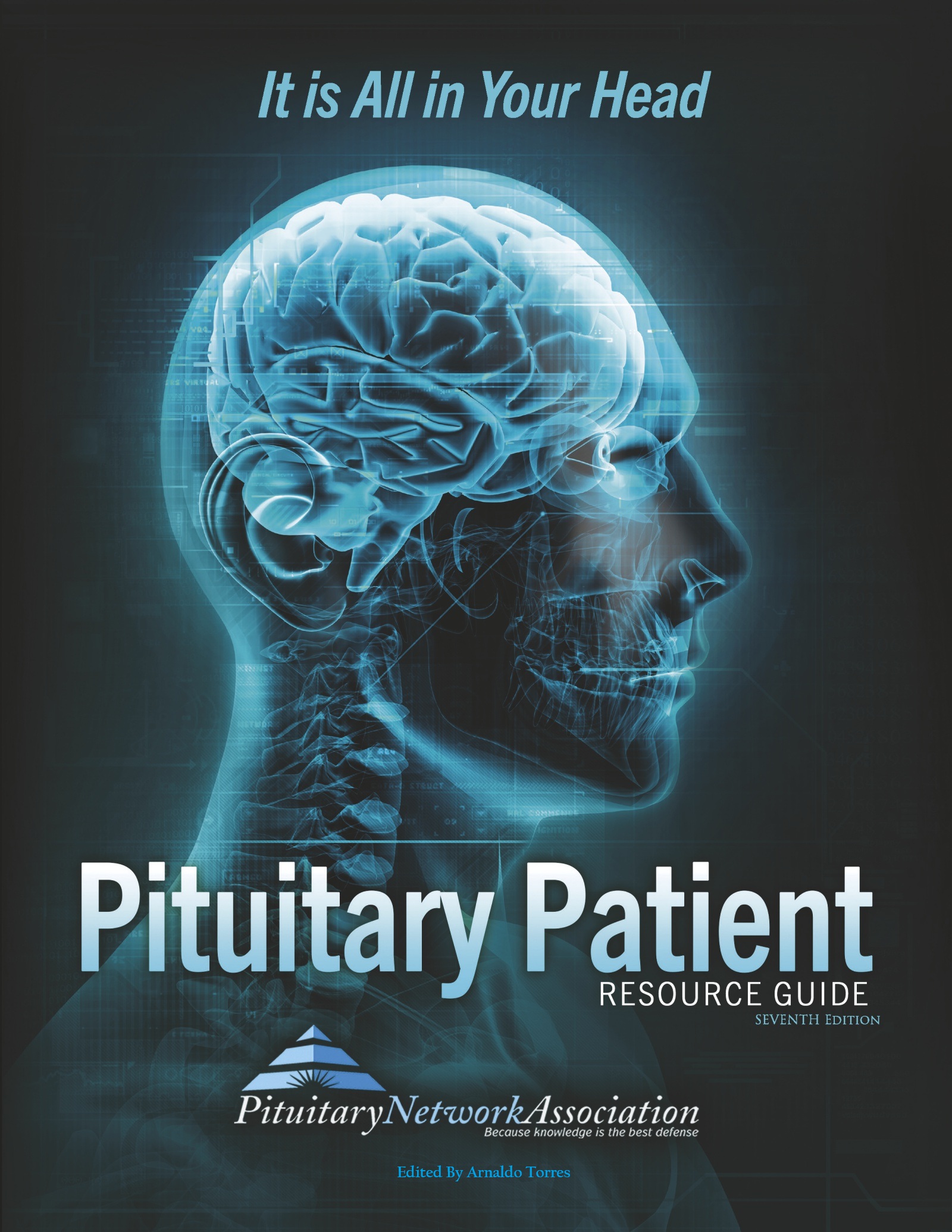News Articles February 2022
Written on 04 February 2022.
PNA Spotlight: Dr. Yuval Eisenberg

This month the PNA Spotlight shines on Dr. Yuval Eisenberg. Dr. Eisenberg graduated from the Rush Medical College of Rush University Medical Center in 2009. He works in Chicago, IL and 2 other locations and specializes in Endocrinology, Diabetes & Metabolism and Internal Medicine. Dr. Eisenberg is affiliated with University Of Illinois Hospital Health & Science Center. He was kind enough to answer some of our questions:
• What inspired you to choose your career path?
My career path was guided by both my interaction with patients and my mentors. The highlight of my medical school training was helping to diagnose a suffering young man with multiple endocrine neoplasia type 1 (MEN1), a rare genetic disorder causing multiple (including pituitary) tumors. Listening to his concerns and thinking outside the box helped provide him with the correct diagnosis and treatment plan, and started my journey into endocrinology. I have been fortunate to work with excellent clinician-educators in my career. Learning about and observing the care of patients with endocrine-related problems was fascinating and rewarding. The farther I got in my training the more I realized that Endocrinology was my passion and that patients with pituitary disorders would be my sub-focus. Patients with pituitary diseases are a unique population who are in need of education, support and reassurance at diagnosis and often require long-term follow-up. This allows for time to develop a trusting bond; an aspect of medical practice I thoroughly enjoy.
• What is the primary focus of your work/research?
My main focus is clinical endocrinology practice, and I see a variety of patients, but I have a specialized interest in patients with pituitary disorders. My research interest is in the hormone oxytocin and how it might effect patients with pituitary hormone deficiencies (hypopituitarism).
• What do you consider to be the future of your field?
In my opinion, the future is in specialized and individualized expert care providing for patients with pituitary disorders. Given the rarity of these diseases, patients are best served by provider with interest and experience. Also, the more we know about pituitary tumors and the genetics behind them, the better we will be able to predict patient outcomes and tailor our therapies.
• What should patients know about your field/what deserves more recognition/awareness?
My feeling is that patients need to know that they can/should advocate to get the care they deserve from providers with interest and experience in caring for individuals with their condition. They should also utilize the excellent patient centered resources (like the PNA) to help educate and direct their care.
• What would you like to convey about yourself to your patients?
The best part of my job is helping patients (and their families) understand their condition, their prognosis and their options. It’s tremendously rewarding to help someone feel more comfortable with what is often a completely foreign, and sometimes scary sounding group of diseases. I strive to always spend the time and energy needed to make patients feel more at ease with and educated about their disease.
• Why did you get involved with the PNA and what is the extent of your involvement?
Early in my career, I became excited to become more involved. My mentor has also been involved in the PNA for many years and recommended I become involved, as he found it an excellent resource for patients and providers.
PNA Highlights March 2023

Man needs difficulties; they are necessary for health.
-Carl Jung
PNA Spotlight: Dr. Yuval Eisenberg
This month the PNA Spotlight shines on Dr. Yuval Eisenberg. Dr. Eisenberg graduated from the Rush Medical College of Rush University Medical Center in 2009. He works in Chicago, IL and 2 other locations and specializes in Endocrinology, Diabetes & Metabolism and Internal Medicine. Dr. Eisenberg is affiliated with University Of Illinois Hospital Health & Science Center. He was kind enough to answer some of our questions:
• What inspired you to choose your career path?

PNA Medical Corner: The Size of Pituitary Microadenomas .
This month the PNA Medical Corner showcases a study co-authored by Drs. Edward Laws and Ursula Kaiser, both longtime members of the PNA. The study looks at the size of microadenomas over time. It concludes that two-thirds of microadenomas studied either stayed the same or shrank over time, and therefore that “less frequent pituitary MRI surveillance for patients with incidental pituitary microadenomas may be safe.”
https://www.acpjournals.org/doi/10.7326/M22-1728
Abstract


Copyright © 2024 Pituitary Network Association All rights reserved.
Disclaimer: PNA does not engage in the practice of medicine. It is not a medical authority, nor does it claim to have medical expertise. In all cases, PNA recommends that you consult your own physician regarding any course of treatment or medication.
Our mailing address is:
Pituitary Network Association
P.O. Box 1958
Thousand Oaks, CA 91358
(805) 499-9973 Phone - (805) 480-0633 Fax
Email [email protected]
You are receiving this Newsletter because you have shown interest in receiving information about our activities.
If you do not want to receive any more emails from PNA, Unsubscribe.
News Articles March 2023
Case Study Links Mifepristone in Cushing’s Patient to Liver Damage
A study published in the Journal of Medical Case Reports looks at the experience of a woman with Cushing’s who was treated with Korylm (mifepristone) and who developed liver damage. Read more here:
Or here:
Portable MRI Scanners Proliferate
An article in the magazine “Science” looks at a new generation of portable low-field MRI scanners that make imaging more accessible throughout the world. Read more:
New Classification Scheme for Ovulatory Disorders
An article in “Focus on Reproduction” explains that the international Federation of Gynecology and Obstetrics (FIGO) has come up with a new way to classify ovulatory disorders – adding PCOS as a category, alongside hypothalamus, pituitary and ovary. Read more:
Factors Behind Obesity
An article on Endocrine Web goes over the primary contributors to obesity, which has become a national health threat. Read more:
Cortisol and Energy Levels
An article in Fashion Journal.au explains the role the hormone cortisol plays in people’s energy levels and recommends people concerned about it see a doctor, reduce stress, eat well and get more sleep. Read more:
The Science Behind Stress
An article in epigram.org looks at the biology of stress and the hormones involved. Read more:
PNA Spotlight: Dr. Adriana G. Ioachimescu
 This month the PNA Spotlight focuses on endocrinologist Adriana G. Ioachimescu, MD, PhD, FACE at the Medical College of Wisconsin, a lifetime professional member of the PNA.
This month the PNA Spotlight focuses on endocrinologist Adriana G. Ioachimescu, MD, PhD, FACE at the Medical College of Wisconsin, a lifetime professional member of the PNA.
Prior to her recent move, Dr. Ioachimescu was a Professor of Medicine in Endocrinology and Neurosurgery at the Emory University School of Medicine. Dr. Ioachimescu was also co-director and co-founder of the Emory Neuroendocrine Pituitary Center and a consulting editor at Endocrinology and Metabolism Clinics. Previously she worked at Carol Davila University in Bucharest, Romania, and at the Cleveland Clinic.
Dr. Ioachimescu was born in Bucharest, Romania and earned her PhD in Neuroendocrinology from Carol Davila University of Medicine. She completed an internship in internal medicine at Danbury Hospital and then a fellowship in Endocrinology at the Cleveland Clinic. She did residencies in internal medicine at Carol Davila University, Yale University and the Cleveland Clinic.
Dr. Ioachimescu was kind enough to respond to a few questions from the PNA:
What inspired you to choose your career path?
In medical school, I had a wonderful professor of endocrinology, Dr. Mihai Coculescu, who inspired me to follow this path. Endocrinology was a great fit for me because I loved biochemistry and math. I became fascinated by feedback loops and hormonal circadian rhythms. I noticed the how hormones disturbances influence many organs and systems, especially in patients with pituitary tumors. I was captivated by the link between hormones and the brain and started research in this field early on in my medical career.
What is the primary focus of your work/research?
I am a pituitary endocrinologist, which means I see patients with disorders of the pituitary gland, as well as adrenal disorders that cause high cortisol levels. Together with my neurosurgery colleague, Dr. Oyesiku, I oversee patient care at the Emory Pituitary Center. In terms of research, one of my current interests is to establish prognostication systems for pituitary adenomas, which will allow personalized treatments. Let’s take acromegaly, for example. When I saw my first patient with this condition 25 years ago in Romania, all we had in terms of medical treatment was bromocriptine. We now have available several classes of medications that we use based on a “trial and error” approach. I hope research will move us closer to customized treatment plans that get our patients in control and feeling better faster.
What do you consider to be the future of your field?
These are exciting times for specialists like me who dedicated their career to the pituitary gland. Several histological and molecular markers have been developed that have allowed us to move translational research closer to the patients and their problems. Physicians will soon have the right tools to predict clinical course of pituitary adenomas more precisely and to develop individualized plans to manage them. Also, scientists are working on treatments that specifically target certain genetic or molecular pathways that will create a paradigm shift in how we treat pituitary disorders.
What should patients know about your field/what deserves more recognition/awareness?
Pituitary disorders are complex and usually require a multidisciplinary approach. Every day, I am in contact with neurosurgeons, neuroradiologists, pathologists, radiation oncologists, gynecologists, urologists, psychologists and other specialists. Most importantly, I constantly communicate with the internists or primary care physicians. While the hormones and/or the tumor itself are at the center of the problem, they cause diverse health problems that warrant specific evaluation and management.
What would you like to convey about yourself to your patients?
It is a privilege for me to take care of you. I am honored by the trust you place in me and I will continue to work tirelessly to help you feel better. I know that the same condition affects different patients in different ways and that laboratory results can be confusing. I realize the complexity of your condition. I learn something new every day. I assure you, we make progress in our diagnostic and therapeutic abilities. I am here to guide you through the process and offer you a treatment plan that suits your needs.
Why did you get involved with the PNA; what is the extent of your involvement.
I like working with the PNA because this organization offers a reliable source of information for patients and their families. The PNA has provided valuable patient advocacy in the field of pituitary diseases since 1992. I partnered with PNA ten years ago because we share the goals of improving awareness about pituitary disorders and educating both patients and the medical community. I am a member of the PNA scientific advisory board and together we published books and other educational materials, and we recorded webinars. The PNA staff is friendly and passionate about their mission.
March 2023 Research Articles
Pituitary Tumors
CircOMA1 modulates cabergoline resistance by downregulating ferroptosis in prolactinoma.
The clinical characteristics and gene mutations associated with thyroid hormone resistance syndrome coexisting with pituitary tumors.
AIP gene germline variants in adult Polish patients with apparently sporadic pituitary macroadenomas.
Expression and Clinical Significance of MDM2 in Non-Functioning PitNETs.
Pituitary Surgery
Prospective evaluation of multidimensional health-related quality of life after endoscopic endonasal surgery for pituitary adenomas using the endoscopic endonasal sinus and skull base surgery questionnaire
Bilateral Superficial Trigeminal Nerve Blocks are not more Effective than a Placebo in Abolishing Post-operative Headache in Pituitary Transsphenoidal Neurosurgery: A Prospective, Randomized, Double-blinded Clinical Trial.
Cortisol and ACTH Measurements at Extubation From Pituitary Surgery Predicts Hypothalamic-Pituitary-Adrenal Axis Function.
OptImal Gamma kNife lIghTnIng sOlutioN (IGNITION) score to characterize the solution space of the Gamma Knife FIP optimizer for stereotactic radiosurgery.
Effects of Craniotomy and Endoscopic Endonasal Transsphenoidal Surgery on Bodyweight in Adult-Onset Craniopharyngioma: A Single-Center Retrospective Study.
Pituitary Cancer
Outcome and prognostic factors for pituitary carcinomas: lessons from a systematic review.
Imaging
Multiple Brain Tumor Classification with Dense CNN Architecture Using Brain MRI Images.
Evaluation of preoperative visual pathway impairment in patients with non-functioning pituitary adenoma using diffusion tensor imaging coupled with optical coherence tomography.
PNA Medical Corner: Size of Pituitary Microadenomas
This month the PNA Medical Corner showcases a study co-authored by Drs. Edward Laws and Ursula Kaiser, both longtime members of the PNA. The study looks at the size of microadenomas over time. It concludes that two-thirds of microadenomas studied either stayed the same or shrank over time, and therefore that “less frequent pituitary MRI surveillance for patients with incidental pituitary microadenomas may be safe.
Link:
https://www.acpjournals.org/doi/10.7326/M22-1728
Long-Term Changes in the Size of Pituitary Microadenomas
-
Dawid Hordejuk, BA; Yee-Ming M. Cheung, MD; Wei Wang, PhD; Timothy Smith, MD;
Abstract
Background: The estimated prevalence of pituitary lesions is 10% to 38.5% in radiologic studies. However, how frequently these incidental lesions should be monitored by serial pituitary magnetic resonance imaging (MRI) remains unclear.
Objective: To evaluate changes in pituitary microadenomas over time
Design: Retrospective, longitudinal cohort study.
Setting: Mass General Brigham, Boston, Massachusetts.
Patients: Evidence of pituitary microadenoma from MRI.
Measurements: Dimensions of pituitary microadenomas.
Results: During the study period (from 2003 to 2021), 414 patients with pituitary microadenomas were identified. Of the 177 patients who had more than 1 MRI, 78 had no change in the size of the microadenoma over time, 49 had an increase in size, 34 had a decrease in size, and 16 had both an increase and decrease in size. By linear mixed model analysis, the estimated slope was 0.016 mm/y (95% CI, −0.037 to 0.069). In the subgroup analysis, pituitary adenomas with a baseline size of 4 mm or less tended to increase in size. The estimated slope was 0.09 mm/y (CI, 0.020 to 0.161). In contrast, in the subgroup with baseline tumor size greater than 4 mm, the size tended to decrease. The estimated slope was −0.063 mm/y (CI, −0.141 to 0.015).
Limitation: Retrospective cohort, some patients were lost to follow-up for unknown reasons, and data were limited to local large institutions.
Conclusion: During the study period, approximately two thirds of the microadenomas remained unchanged or decreased in size. The growth, if any, was slow. These findings suggest that less frequent pituitary MRI surveillance for patients with incidental pituitary microadenomas may be safe.
Primary Funding Source: None.

Dr. Edward Laws

Dr. Ursula Kaiser
Xeris Biopharma Announces FDA Grants Orphan-drug Exclusivity for Recorlev®
PNA Highlights February 2023

Give a man health and a course to steer, and he’ll never stop to trouble about whether he’s happy or not.
-George Bernard Shaw
In Memorium:
Justin Schultz Cetas, MD, PhD
Oct. 3, 1970 – July 13, 2022
PNA Spotlight: Tyler J. Kenning
This month the PNA Spotlight focuses on Tyler J. Kenning, MD, FAANS, who serves as director of pituitary and cranial base surgery at Piedmont Brain Tumor Center, part of Piedmont Atlanta Hospital. Dr. Kenning attended medical school at Thomas Jefferson University, graduating in 2005. He did his residency at Albany Medical Center in neurological surgery and completed a fellowship in neurosurgical oncology at Thomas Jefferson University Hospital. Here are Dr. Kenning’s answers to a series of questions posed by the PNA.

PNA Medical Corner: When Pituitary Carcinoma Spreads to the Cervical Spine
This month the PNA Medical Corner focuses on a study co-authored by longtime PNA member Dr. William Couldwell. It presents a case study of a woman whose prior pituitary carcinoma spread to the cervical spine. They conclude that long term monitoring of hormones after pituitary surgery is crucial.

Copyright © 2024 Pituitary Network Association All rights reserved.
Disclaimer: PNA does not engage in the practice of medicine. It is not a medical authority, nor does it claim to have medical expertise. In all cases, PNA recommends that you consult your own physician regarding any course of treatment or medication.
Our mailing address is:
Pituitary Network Association
P.O. Box 1958
Thousand Oaks, CA 91358
(805) 499-9973 Phone - (805) 480-0633 Fax
Email [email protected]
You are receiving this Newsletter because you have shown interest in receiving information about our activities.
If you do not want to receive any more emails from PNA, Unsubscribe.
February 2023 Research Articles
Pituitary Tumors
MRI-based brain tumor detection using convolutional deep learning methods and chosen machine learning techniques.
Cathepsin D Inhibits Angiogenesis in Pituitary Neuroendocrine Tumors.
Pituitary adenoma “pneumo-apoplexy”.
Improved Detection of Cavernous Sinus Invasion of Pituitary Macroadenomas with Ultra-High-Field 7 T MRI.
Risk Factor and Replacement Therapy Analysis of Pre- and Postoperative Endocrine Deficiencies for Craniopharyngioma.
The Morphology of the Pituitary Gland: A Meta-Analysis with Implications for Diagnostic Imaging.
Pituitary Surgery
Preoperative frailty status measured by Clinical Risk Analysis Index and adverse events after endoscopic endonasal transsphenoidal resection of pituitary adenoma: results of a single center prospective case series.
Closure strategy for endoscopic pituitary surgery: Experience from 3015 patients.
Pre-Surgery Patient Health Contributes to Aggravated Sino-Nasal Outcome and Quality of Life after Pituitary Adenomectomy.
Clinical Applicability of the Sellar Barrier Concept in Patients with Pituitary Apoplexy: Is It Possible?
Pituitary Cancer
Case Report: Pituitary metastasis as a presenting manifestation of silent gastric cardia adenocarcinoma.
COVID and the Pituitary
The pituitary gland in SARS-CoV-2 infections, vaccinations, and post-COVID syndrome.
Cushing’s
Advances in Molecular Pathophysiology and Targeted Therapy for Cushing’s Disease.
News Articles February 2023
Bones of 18th Century Acromegalic Taken Off Museum Display

Photo courtesy of the Queen Mary University of London.
The bones of an 18th century acromegalic Irish man named Charles Byrne were on display as a medical curiosity for 140 years before being taken off display, in accordance with his last wishes. Byrne was almost 8 feet tall when he died in 1783 and had requested a burial at sea, however a friend sold his body to a surgeon named John Hunter. It eventually ended up on display at the Hunterian Museum, which is affiliated with the Royal College of Surgeons of England. Read more:
Transsphenoidal Pituitary Neurosurgery: A Moment by Moment Account
Dr. Mazda Turel, a neurosurgeon in Mumbai, India, tells the story of a transsphenoidal surgery he performed. He explains each step in a drama with perilous twists and turns. Read more:
Cushing’s Case Report: Severe Infection and Electrolyte Imbalance
An article in Cushing’s Disease News looks at the case of an 82-year-old woman who presented with a severe muscle infection and an imbalance of electrolytes. She was diagnosed with Cushing’s but passed away from infectious complications from a surgery before she could be treated for Cushing’s. Read more:
11-year-old Patient Battles Tumor Pressing on Pituitary
An article in Spring Advertiser.co tells the story of an 11-year-old girl who is battling optic nerve hypoplasia – and has a schwannoma pressing on her pituitary. Read more:
Available Now!

The Pituitary Patient Resource Guide Sixth Edition is now available! Be one of the first to have the most up-to-date information. The Pituitary Patient Resource Guide a one of a kind publication intended as an invaluable source of information not only for patients but also their families, physicians, and all health care providers. It contains information on symptoms, proper testing, how to get a diagnosis, and the treatment options that are available. It also includes Pituitary Network Association's patient resource listings for expert medical care.

Xeris Pharmaceuticals is valued member of the PNA










